The Ya Yin Kwan Collection: Treasures of Early Southeast Asian History
Senior Librarian Ang Seow Leng provides insight into Tan Yeok Seong and his donated Ya Yin Kwan Collection.
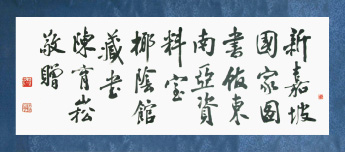 Calligraphy by Tan Yeok Seong on the donation of his Ya Yin Kwan Collection to the National Library, South East Asia Room.
Calligraphy by Tan Yeok Seong on the donation of his Ya Yin Kwan Collection to the National Library, South East Asia Room.
— Tan Yeok Seong, Ya Yin Kwan, 22 July 1964
In a published note on the presentation of the Ya Yin Kwan Collection to the National Library in 1964, Tan Yeok Seong generously donated his collection of books, accumulated over a lifetime, with the hope that this collection would benefit generations of scholars in their research.
This was to be the first public donation of a collection of high research value. At a time when 19th- and early 20th-century Southeast Asia histories and cultures were written mostly by the Europeans, Tan wanted more Southeast Asian scholars to write their own history. He regarded the National Library as a centre for Southeast Asian studies and believed that a rich collection of information resources could encourage more people to become interested in Southeast Asian history. In his presentation speech, he expressed concerns that with the growing prominence of Southeast Asia as a geographical region in the world, Russia, Japan, America and China had started setting up Southeast Asia research centres. Therefore, Singapore should step up in this area.1
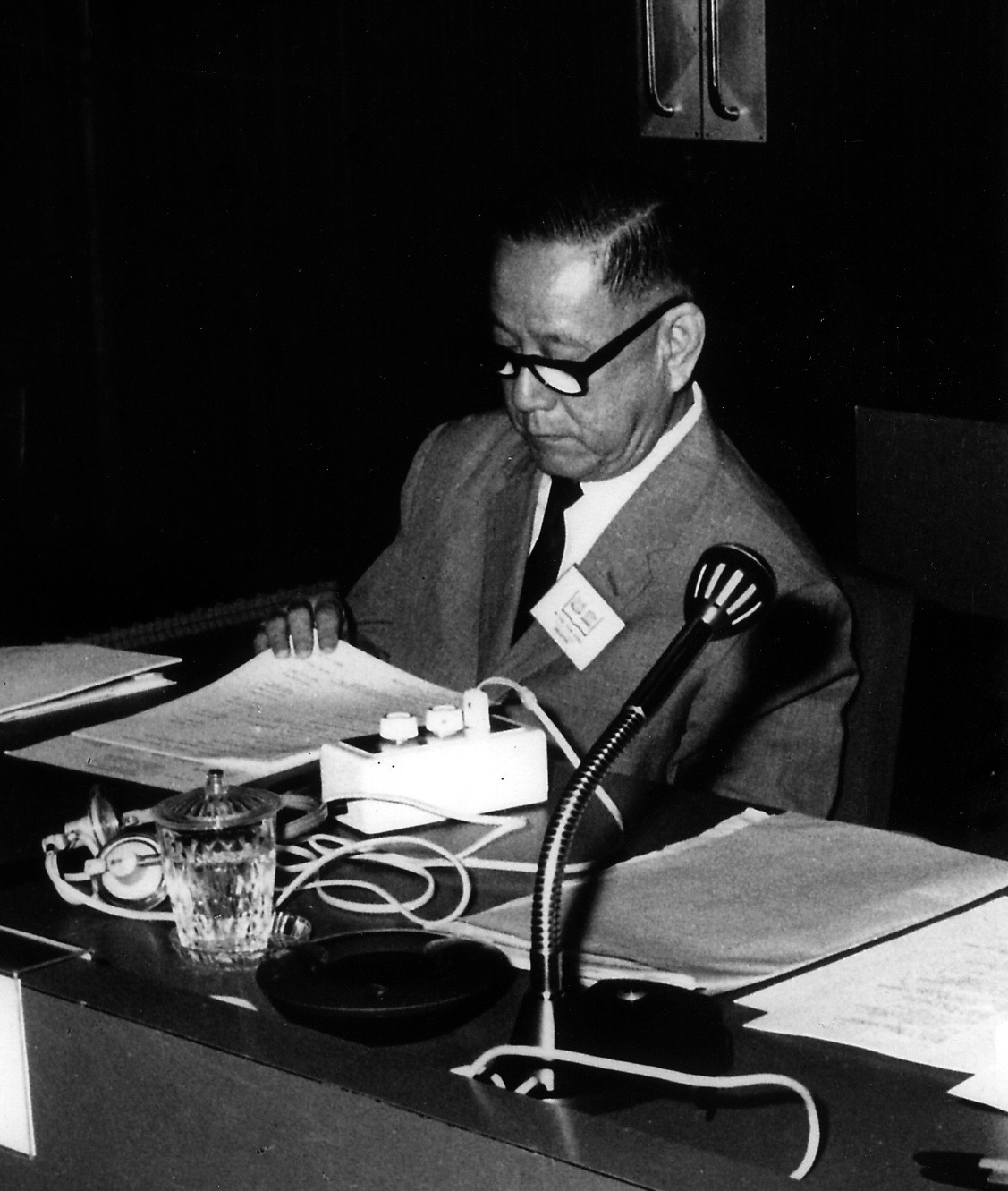
Tan Yeok Seong (1903–84) devoted his life and time to the research of Southeast Asian history.2 He received both English and Chinese education and graduated from Amoy University in 1926. His grounding in history and effective bilingualism allowed him to indulge in his pursuit of interesting topics, for example, the names Singapore used to be known by during precolonial times, authenticity of Gong Zhen’s Records of Foreign Countries in the Western Ocean, and Singapore’s earliest Chinese school, just to name a few. He wrote numerous articles and published several books on the history of Singapore and Malaysia, and the Chinese overseas.
In the foreword to the publication Collected Writings from the Ya-yin Studio,3 Dr Gwee Yee Hean praised Tan as an amateur historian who enjoyed extensive contacts with academics and had attained more achievements than many professional historians. When the commissioner-general for the United Kingdom in Southeast Asia, Malcolm MacDonald, came to Singapore in the early 1950s, he visited Tan to learn more about Southeast Asia from him.4
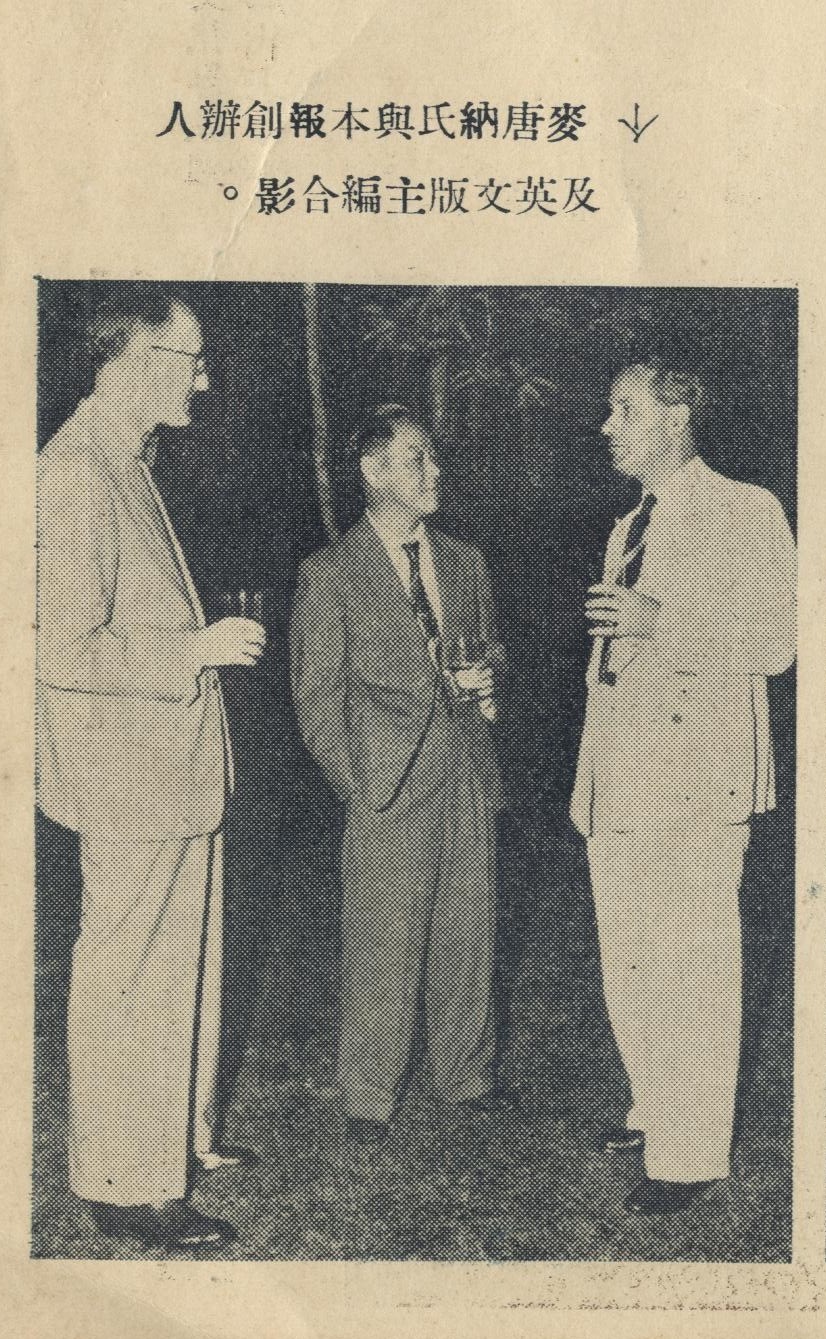
Besides actively collecting books, Tan was also a collector of historical artefacts. In 1969, he organised an exhibition at the National Museum through the South Seas Society. The exhibition featured more than 200 pieces of Chinese porcelain dating back to the Ming and Qing dynasties. These pieces, some of which belonged to Tan, were on display as evidences of Chinese influence in Singapore and the region five centuries before 1819.5 A catalogue titled Chinese Islamic Wares in the Collection of Muzium Negara was published in Malaysia, according to The Straits Times dated 30 June 1981. Among the 28 pieces of Islamic wares listed, some of them used to belong to Tan Yeok Seong but had been bought over by the museum.6 The British Museum also listed 11 Hindu religious artefacts that were collected by Tan.
Tan participated in various social and cultural establishments. Victor Sim’s Biographies of Prominent Chinese in Singapore gives a brief outline of his involvement.7 In 1935, he cofounded the Anthropological Museum of Amoy with Professor Lim Hui Siang. This museum is still in existence today and boasts of being the first anthropological museum in China. In 1938, Tan represented Malaya at the Third Congress of Far Eastern Prehistorians. Although Tan was not a founder of the South Seas Society, he was an active member. He became president of the society in 1940. In 1950, he was president of the Chinese Study Group, which studied Chinese affairs and culture in English.

Tan and his friends set up the Nanyang Book Company in 1935. It was a major supplier of textbooks with Malayan content for Chinese children. Business soon flourished and branches were set up in major cities in Southeast Asia. Unfortunately, the onset of World War II severely crippled the business. While running a business, Tan never neglected his reading and research. According to Teo Han Wue, Tan was so passionate about history and sharing his knowledge of history, that his “business associates had to bear with him when he went on about his historical research”.8
The Yan Yin Kwan Collection
Tan started his library collection from his university days in Amoy. After the manner of Chinese scholars, he named this collection the Ya Yin Kwan (Palm Shade Pavilion) Collection. It covers a myriad subjects such as philosophy, education, economics, archaeology, ceramics, geography, history and culture. Chinese titles take up more than half of the total collection. The rest of the collection comprises largely English titles, with a small number of titles in Malay, Japanese and European languages.9
This collection was an accumulation of years of active collection of titles related to Southeast Asian history, through contacts with rare book dealers, and exchange of titles with scholars. Thus it can be regarded as a collection of important reference titles before Singapore’s pre-independence days.
Leafing through the pages in this collection, one can get a glimpse of various writers’ perspectives on Southeast Asia and the Chinese overseas from the 18th century to the mid-1960s. Tan not only collected the publications but also used them in his research and meticulously added newspaper cuttings on the relevant topics in some books. One can also find autographed publications from authors who gave their publications as gifts to him.
Researchers looking for trends on Southeast Asian studies before the 1970s can refer to some of the titles in the Ya Yin Kwan Collection. These include Survey of Chinese-language Materials on Southeast Asia in the Hoover Institute and Library, Stanford University, 1952; A Survey of Bibliographies in Western Languages Concerning East and Southeast Asian Studies; Historians of South East Asia; and Research in Southeast Asian Studies in Singapore.
There is also a wide range of titles in the collection on the Chinese in Southeast Asia. For a good overview, Jonas Daniel Vaughan’s The Manners and Customs of the Chinese of the Straits Settlements (1879) gives an account of the social lives of the Chinese in the Straits Settlements. George William Skinner, an American anthropologist, wrote the Report on the Chinese in Southeast Asia, December 1950 (1951) and more than a decade later, Charles Patrick Fitzgerald, an Australian scholar, published The Third China: The Chinese Communities in South-East Asia (1969). The Ya Yin Kwan Collection also has other English and Chinese titles on Chinese communities in other Southeast Asian countries.
In particular, the Ya Yin Kwan Collection has quite a number of Japanese titles that were published in the 1930s and 1940s. These focus mainly on the Chinese in Southeast Asia and Southeast Asian studies. In one of the Chinese articles written by him, Tan Yeok Seong gave a very comprehensive overview of early Japanese studies on the Chinese in Southeast Asia. He also mentioned that some of the Japanese titles in the Ya Yin Kwan collection could no longer be easily found in Japan.10
These titles are just a drop in the ocean of information waiting to be rediscovered in the Ya Yin Kwan Collection. Members of the public may view the Ya Yin Kwan Collection located on Level 10 of the Lee Kong Chian Reference Library, National Library. Those wishing to consult the collection may approach the staff at the Information Counter on Level 11. The collection is to be used within the library’s premises.
Researchers interested in this collection can also request for a copy of the Catalogue of the Ya Yin Kwan Collection in the Lee Kong Chian Reference Library from the Level 11 information counter.
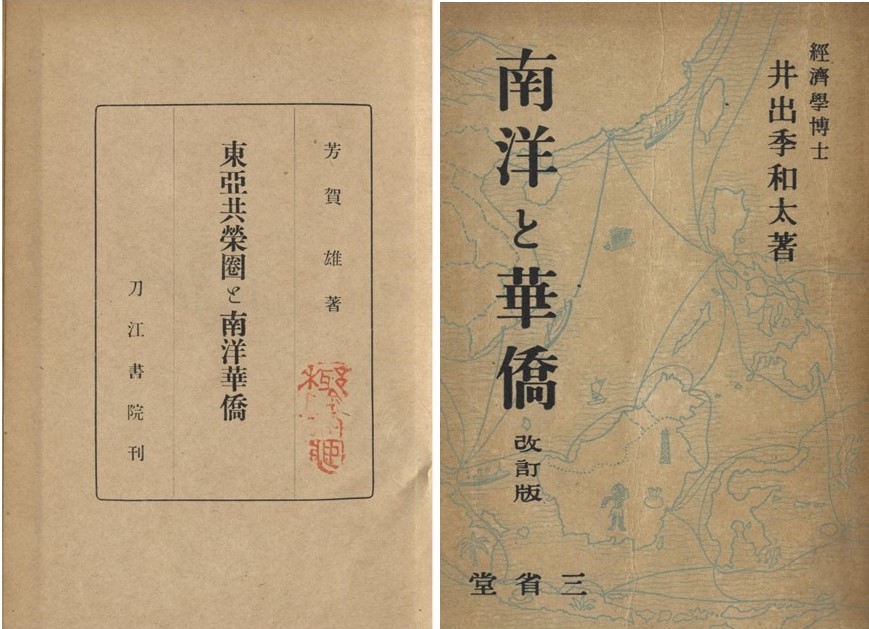 Left: Tōa kyōeiken to Nan\`yō Kakyō = Greater East Asia Co-Prosperity Sphere and the Southeast Asian Chinese Overseas. All rights reserved, Tōkō Shoin, Shōwa 16 [1941] ;
Left: Tōa kyōeiken to Nan\`yō Kakyō = Greater East Asia Co-Prosperity Sphere and the Southeast Asian Chinese Overseas. All rights reserved, Tōkō Shoin, Shōwa 16 [1941] ;Right: Nan’yō to Kakyō = Southeast Asia and the Chinese overseas. All rights reserved, Sanseidō, Shōwa 18 [1943]
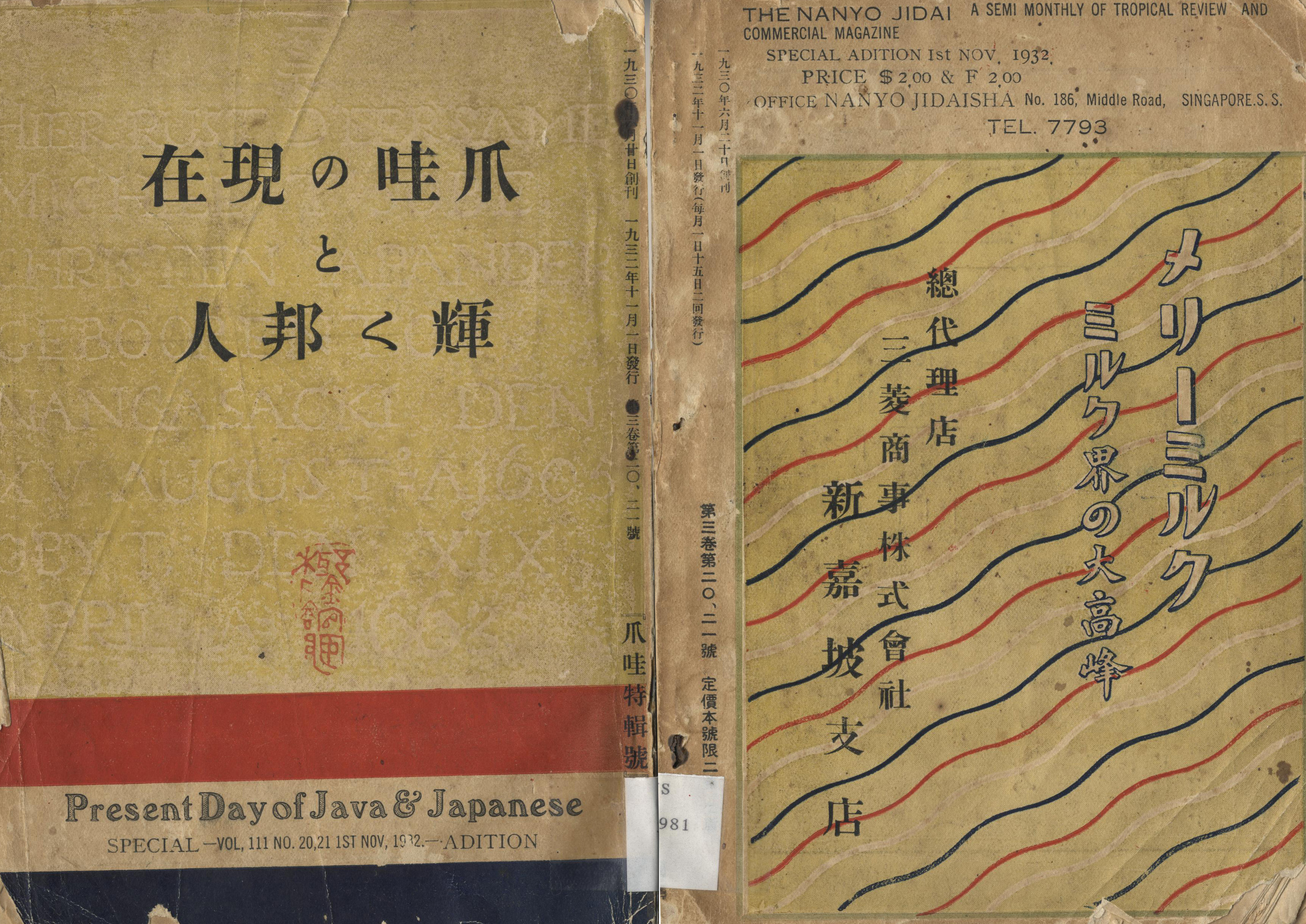 Japanese title published in Singapore. Reproduced from Jawa no genzai to kagayaku hōjin = Present Day of Java & Japanese. All rights reserved, Nan’yō Jidaisha, 1932.
Japanese title published in Singapore. Reproduced from Jawa no genzai to kagayaku hōjin = Present Day of Java & Japanese. All rights reserved, Nan’yō Jidaisha, 1932.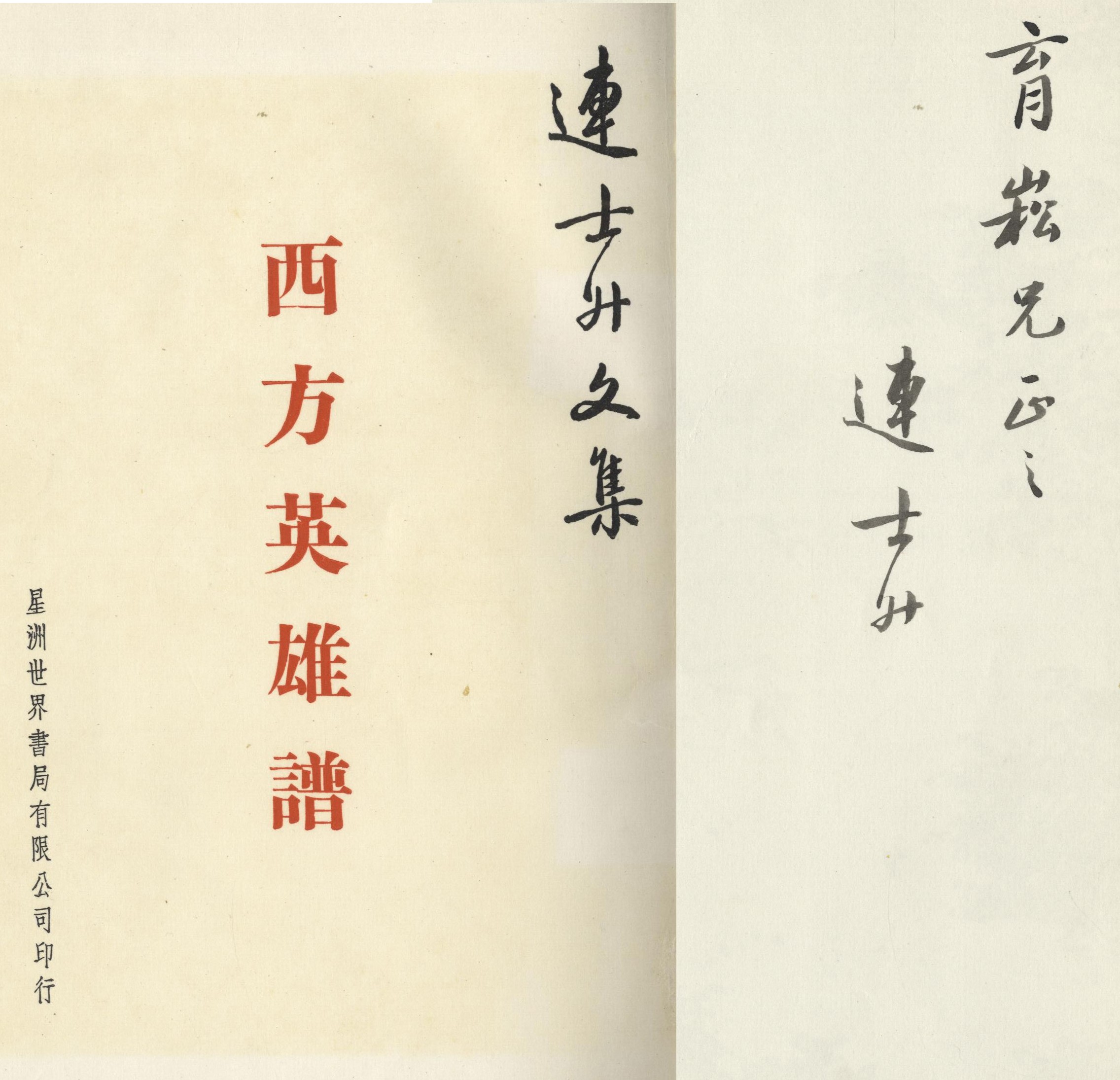 Autographed by 连士升, Lien Shih-Sheng, author of 西方英雄谱. Lien was a prolific writer and Chinese newspapers editor. He was actively involved in the arts, education and cultural organisations in Singapore from the late 1940s to the early 1970s. Reproduced from 西方英雄谱. All rights reserved, 南洋商报社, 1953.
Autographed by 连士升, Lien Shih-Sheng, author of 西方英雄谱. Lien was a prolific writer and Chinese newspapers editor. He was actively involved in the arts, education and cultural organisations in Singapore from the late 1940s to the early 1970s. Reproduced from 西方英雄谱. All rights reserved, 南洋商报社, 1953.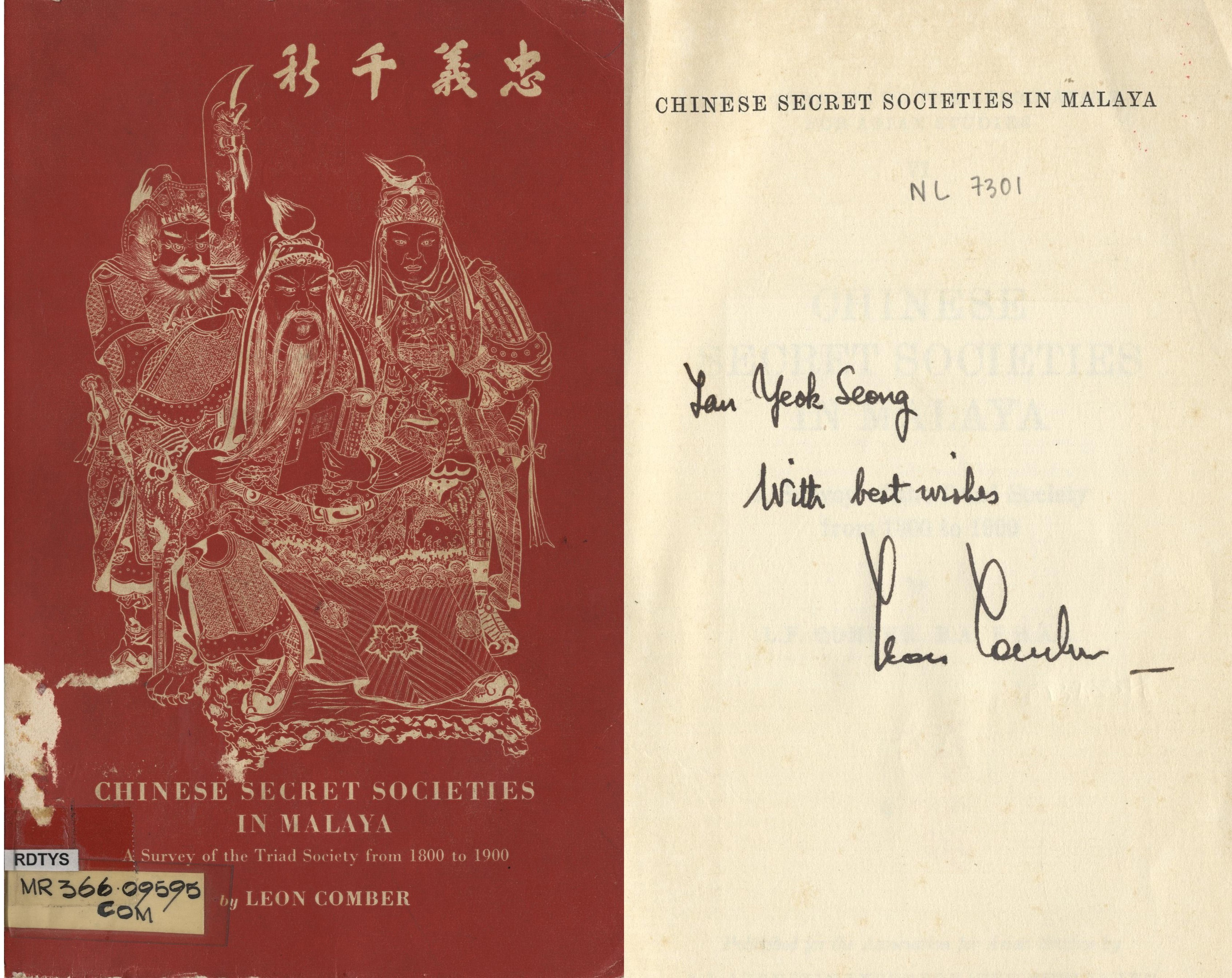 Autographed by Leon Comber, author of Chinese Secret Societies in Malaya: A Survey of the Triad Society from 1800 to 1900. Reproduced from Chinese Secret Societies in Malaya: A Survey of the Triad Society from 1800 to 1900. All rights reserved, Association for Asian Studies by J.J. Augustin, [1959].
Autographed by Leon Comber, author of Chinese Secret Societies in Malaya: A Survey of the Triad Society from 1800 to 1900. Reproduced from Chinese Secret Societies in Malaya: A Survey of the Triad Society from 1800 to 1900. All rights reserved, Association for Asian Studies by J.J. Augustin, [1959].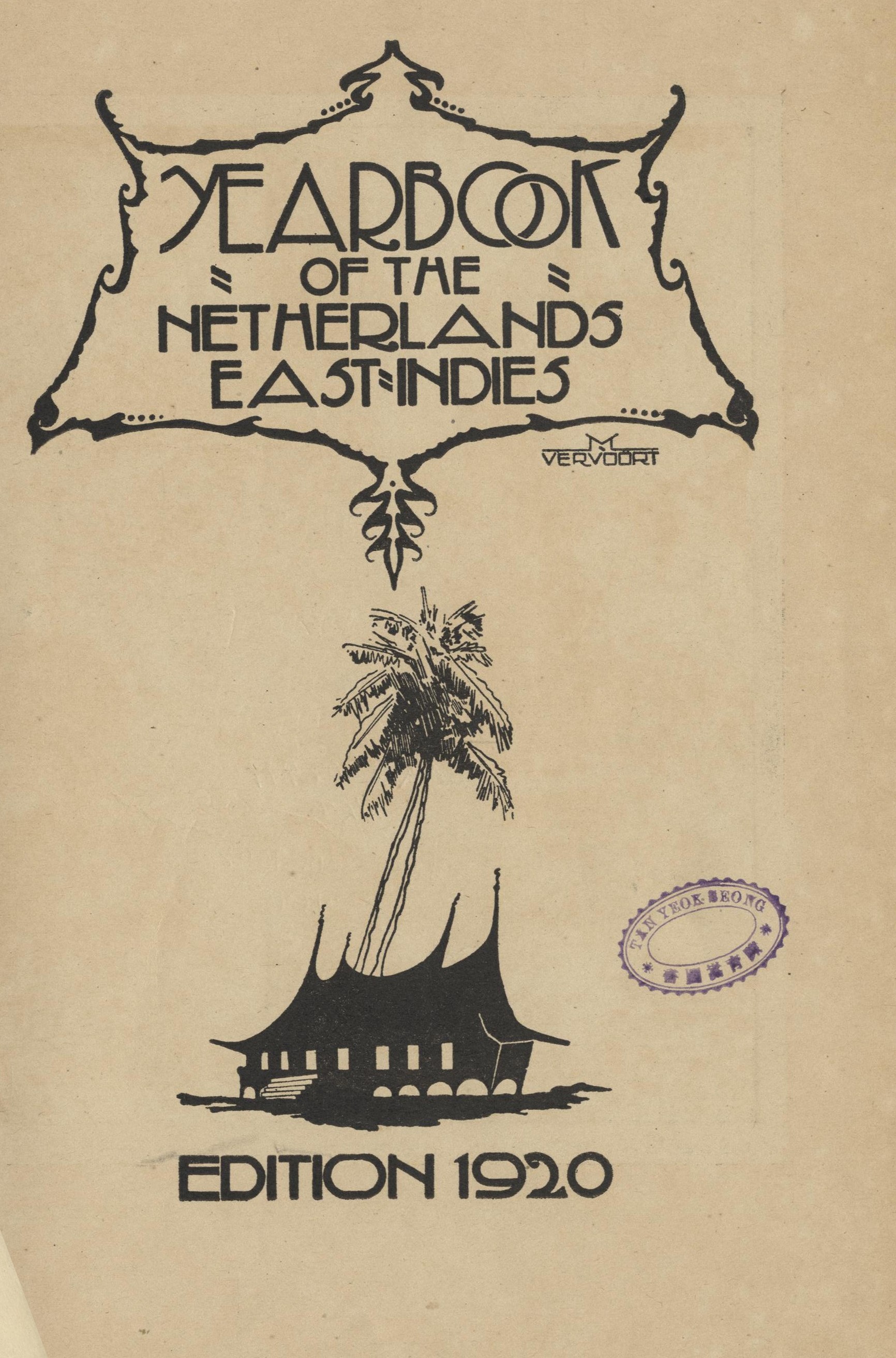 Handbook of the Netherlands East-Indies, 1920. All rights reserved, Netherlands East Indies. Dept. of Agriculture, Industry and Commerce, 1920–1930.
Handbook of the Netherlands East-Indies, 1920. All rights reserved, Netherlands East Indies. Dept. of Agriculture, Industry and Commerce, 1920–1930.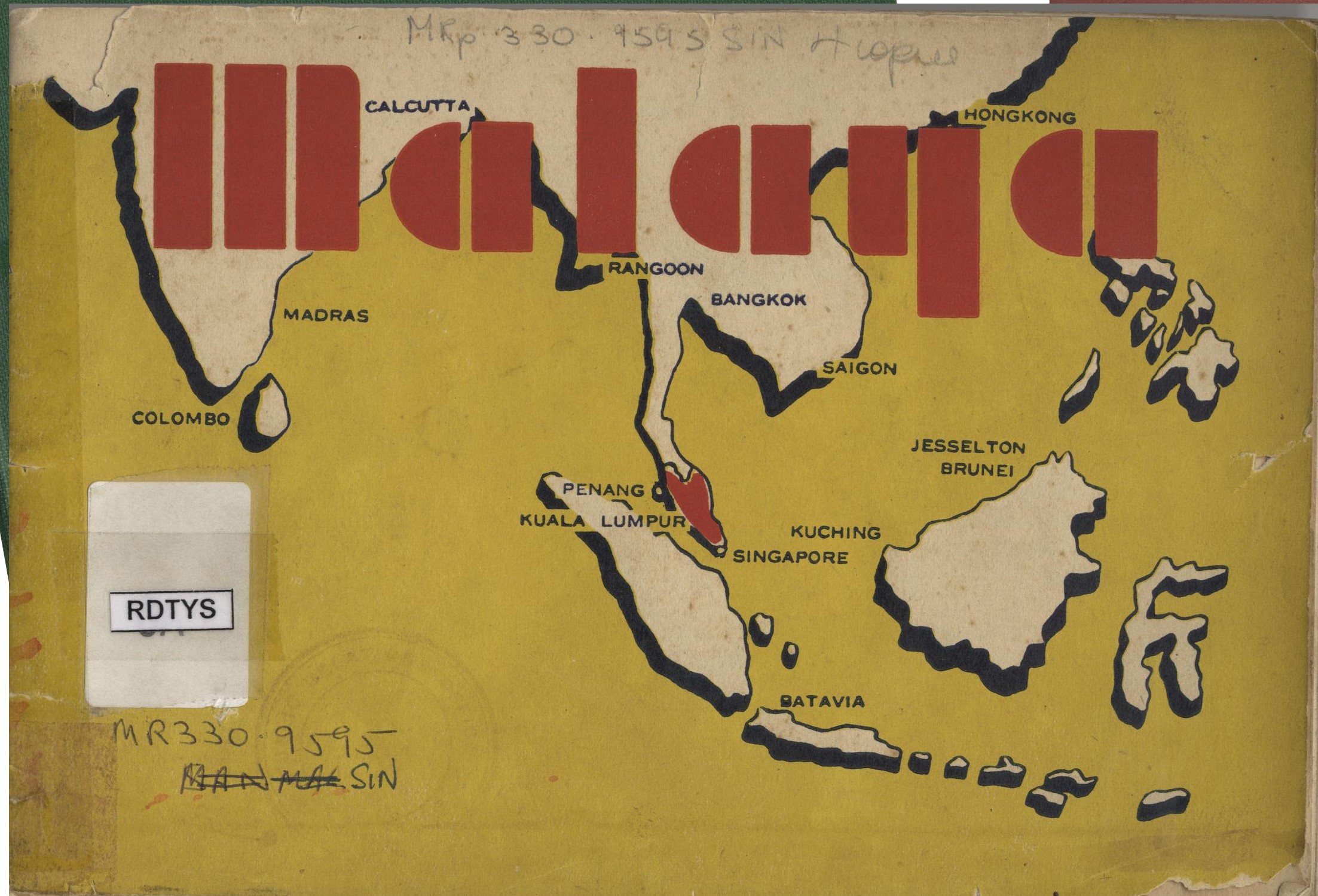 Malaya: Economic and Commercial Conditions in the Federation of Malaya and Singapore, March 1951. All rights reserved, H.M.S.O, 1952.
Malaya: Economic and Commercial Conditions in the Federation of Malaya and Singapore, March 1951. All rights reserved, H.M.S.O, 1952.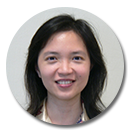
Senior Librarian
Lee Kong Chian Reference Library
National Library
NOTES
-
“Guojia tushu guan kuochong zhong: Dongnanya ziliao guan kaimu” 国家图书馆扩充中: 东南亚 资料馆开幕 [National Library expanding: Opening of Southeast Asian archives], Sin Chew Daily 星洲日报, 29 December 1964, 8. ↩
-
For more details, please refer to article Alex Tan T. H., “The Life of Tan Yeok Seong,” in Catalogue of the Ya Yin Kwan Collection in the Lee Kong Chian Reference Library (Singapore: National Library Board, 2006), 13–19. (From BookSG) ↩
-
This is a collection of more than one hundred articles on history, education, personalities, forewords for books and poetry, written by Tan Yeok Seong. Majority of them are in Chinese, with a small number in English. ↩
-
“Wei wenhua jiaoyu gongxian xinli – ji chenyusong xiansheng,” 为文化教育贡献心力 – 记陈育崧先生 [Contribute to culture and education – in memory of Mr. Chen Yuk-sung], Lianhe Zaobao 联合早报, 5 April 1984, 3. (From NewspaperSG) ↩
-
“Old China That Tells a Story,” Straits Times, 15 August 1969, 6. (From NewspaperSG) ↩
-
“Islamic Porcelain Unique to This Region,” Straits Times, 30 June 1981, 1. (From NewspaperSG) ↩
-
Victor Sim, ed., Biographies of Prominent Chinese in Singapore (Singapore: Nan Kok Pub., 1952), 62. (Call no. RCLOS 920.05957 SIM) ↩
-
Teo Han Wue, “History Lives for Him,” Straits Times, 5 April 1984, 2. (From NewspaperSG) ↩
-
For a Chinese write-up please refer to Jane Wee, “Chenyusong xiansheng yu ye yin guan guancang,” 陈育崧先生与椰阴馆馆藏 [Mr. Chen Yusong and the Yeyin Museum Collection], BiblioAsia no. 1 (April 2006), 22–23. ↩
-
Chen Yusong 陈育崧, “日本的华侨研究螽测, 自陈育崧,” in Ye yin guan wen cun 椰阴馆文存 [Collected writings from the Yayin studio] (Xinjiapo 新加坡: Nan yang xue hui 南洋学会, 1983), 205–11. (Call no. Chinese RSING 959.008 TYS) ↩

